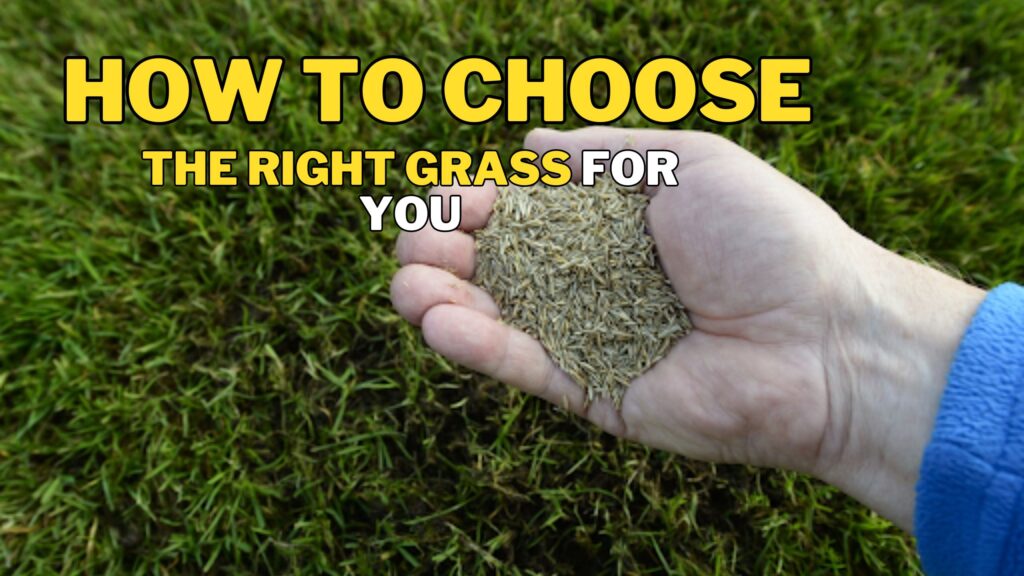
How to Choose the Right Grass

Choosing the right grass for your lawn can make a significant difference in its appearance and maintenance. The Australian climate varies widely, so it’s essential to pick a grass type that suits your specific region. In this article, we’ll explore the key factors to consider when selecting the perfect grass for your yard.
Understanding Your Climate
Australia’s diverse climate zones mean that what works in one area may not be suitable for another. The main climate zones include tropical, subtropical, temperate, and arid. Here’s a brief look at each and the types of grass that thrive there:
Tropical and Subtropical Regions
In tropical and subtropical areas, like Queensland and northern New South Wales, warm-season grasses are the best choice. These grasses handle the heat and humidity well and remain green throughout the year. Popular options include Buffalo, Kikuyu, and Zoysia.
- Buffalo Grass: Known for its broad leaves and soft texture, Buffalo grass is shade-tolerant and requires less mowing.
- Kikuyu Grass: This fast-growing grass is excellent for high-traffic areas but requires regular maintenance to prevent it from becoming invasive.
- Zoysia Grass: Zoysia is a low-maintenance option that tolerates drought well and requires less frequent mowing.
Temperate Regions
In temperate regions like Victoria, Tasmania, and southern parts of New South Wales, cool-season grasses are more suitable. These grasses thrive in cooler temperatures and often go dormant in the hot summer months. Some popular cool-season grasses include Fescue, Ryegrass, and Bluegrass.
- Fescue Grass: Fescue is known for its fine texture and shade tolerance, making it ideal for areas with trees and shrubs.
- Ryegrass: Ryegrass is a durable option that establishes quickly and is often used for overseeding to keep lawns green during winter.
- Bluegrass: Bluegrass is lush and soft underfoot, but it requires more water and care to maintain its appearance.
Arid Regions
For the arid regions, such as central Australia, drought-resistant grasses are essential. These grasses can withstand prolonged dry periods with minimal watering. Couch grass and Buffel grass are two excellent choices for these areas.
- Couch Grass: Couch grass is tough and drought-tolerant, making it ideal for regions with limited rainfall. It spreads quickly, providing good coverage.
- Buffel Grass: Buffel grass is hardy and well-suited for sandy soils, often used in rehabilitation projects due to its resilience.
Assessing Your Lawn’s Conditions
Before selecting a grass type, it’s crucial to evaluate your lawn’s specific conditions. Factors such as soil type, sunlight, and intended use play a significant role in determining the best grass for your yard.
Soil Type
Different grasses have varying soil preferences. Conduct a soil test to determine the pH and nutrient levels in your yard. Most grasses prefer well-drained, slightly acidic to neutral soil. Amending your soil based on the test results can help ensure optimal grass growth.
Sunlight Exposure
Consider how much sunlight your lawn receives daily. Some grasses, like Buffalo and Zoysia, tolerate shade better than others. If your lawn has a lot of shaded areas, choosing a shade-tolerant grass is essential for maintaining a lush appearance.
Intended Use
Think about how you plan to use your lawn. If you have children or pets who will play on the grass frequently, you’ll need a durable, high-traffic grass like Kikuyu or Couch. For ornamental lawns with less foot traffic, a finer-textured grass like Fescue or Bluegrass may be more suitable.
Maintenance Requirements
Different grass types have varying maintenance needs. Consider the time and effort you’re willing to invest in lawn care before making your final decision.
Mowing and Watering
Warm-season grasses like Kikuyu and Zoysia typically require less frequent mowing and watering compared to cool-season grasses. However, they may need more care during extreme heat or drought conditions. Cool-season grasses, on the other hand, often need more water and regular mowing to maintain their lush appearance.
Fertilisation
Grass health and colour can be significantly improved with regular fertilisation. Some grasses, like Couch and Buffalo, may need more frequent feeding to stay green and healthy. Understanding the fertilisation needs of your chosen grass type can help you maintain a vibrant lawn.
Weed Control
Certain grasses are more prone to weeds than others. Kikuyu, for instance, can be invasive if not properly managed. Regular weeding and the use of pre-emergent herbicides can help keep your lawn weed-free.
Making the Final Decision
Choosing the right grass for your lawn involves balancing your climate, lawn conditions, and maintenance preferences. By considering these factors carefully, you can select a grass type that will thrive in your yard and provide a beautiful, green space for years to come.
Consulting a Professional
If you’re still unsure which grass is best for your lawn, consider consulting a local lawn care expert or visiting a garden center. They can provide personalised recommendations based on your specific conditions and preferences.
Testing Small Patches
Before committing to a full lawn installation, you might want to test small patches of different grass types. This approach allows you to see how each variety performs in your environment and helps you make a more informed decision.
In conclusion, choosing the right grass for your Australian lawn requires careful consideration of your regional climate, lawn conditions, and maintenance capabilities. With the right grass, you can enjoy a lush, healthy lawn that enhances the beauty of your outdoor space.
